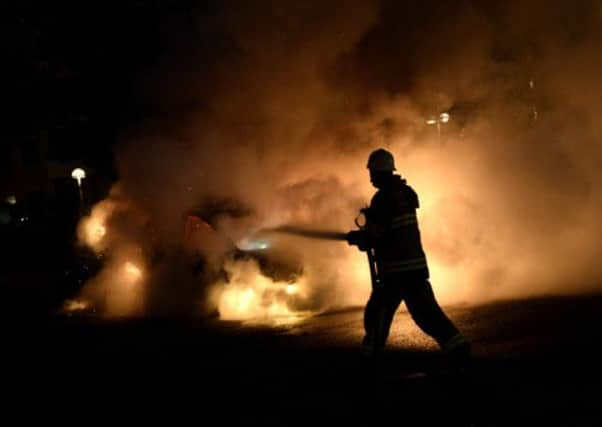Stockholm riots: Race and joblessness at heart


On Tuesday night, a police station in the Jakobsberg area of north-west Stockholm was attacked, two schools were damaged and an arts and crafts centre was set ablaze, despite a call for calm from prime minister Fredrik Reinfeldt.
Kjell Lindgren, spokesman for Stockholm police, said yesterday: “We’ve had around 30 cars set on fire, fires that we connect to youth gangs and criminals.”
Advertisement
Hide AdAdvertisement
Hide AdRami Al-khamisi, co-founder of Megafonen, a group that works for social change in the suburbs, said: “We see a society that is becoming increasingly divided and where the gaps, both socially and economically, are becoming larger.
“And the people out here are being hit the hardest … We have institutional racism.”
The riots appear to have been sparked by the police killing of a 69-year-old man wielding a machete in the suburb of Husby earlier this month, which prompted accusations of police brutality. The riots then spread from Husby to other poor Stockholm suburbs.
Rouzbeh Djalaie, editor of local newspaper Norra Sidan, which covers Husby, said: “The reason is very simple. Unemployment, the housing situation, disrespect from police.
“It just takes something to start a riot, and that was the shooting.”
Mr Djalaie said youths were often stopped by police in the streets for unnecessary identity checks. During the riots, he said some police called local youths “apes”.
Television pictures of blazing cars come as a jolt to a country proud of its reputation for social justice, as well as its hospitality towards refugees from war and repression.
Justice minister Beatrice Ask said: “I understand why many people who live in these suburbs and in Husby are worried, upset, angry and concerned. Social exclusion is a very serious cause of many problems, we understand that.”
Advertisement
Hide AdAdvertisement
Hide AdAfter decades of generous welfare benefits, Stockholm has been reducing the role of the state since the 1990s, spurring the fastest growth in inequality of any advanced OECD economy.
While average living standards are still among the highest in Europe, successive governments have failed to substantially reduce long-term youth unemployment and poverty, which have affected immigrant communities worst.
Some 15 per cent of the population are foreign-born, and unemployment among these stands at 16 per cent compared with 6 per cent for native Swedes, according to OECD data.
Youth unemployment in Husby, at 6 per cent, is twice the overall average across the capital.
Left-leaning tabloid newspaper Aftonbladet said the riots represented a “gigantic failure” of government policies, which had underpinned the rise of ghettos in the suburbs.
As unemployment has grown, the anti-immigrant Sweden Democrats party has risen to third in polls ahead of a general election due next year.
Out of a total 103,000 immigrants last year, 43,900 were asylum seekers, almost 50 per cent up from 2011. Nearly half of these were refugees from fighting in Syria, Afghanistan or Somalia, and will get at least temporary residency.